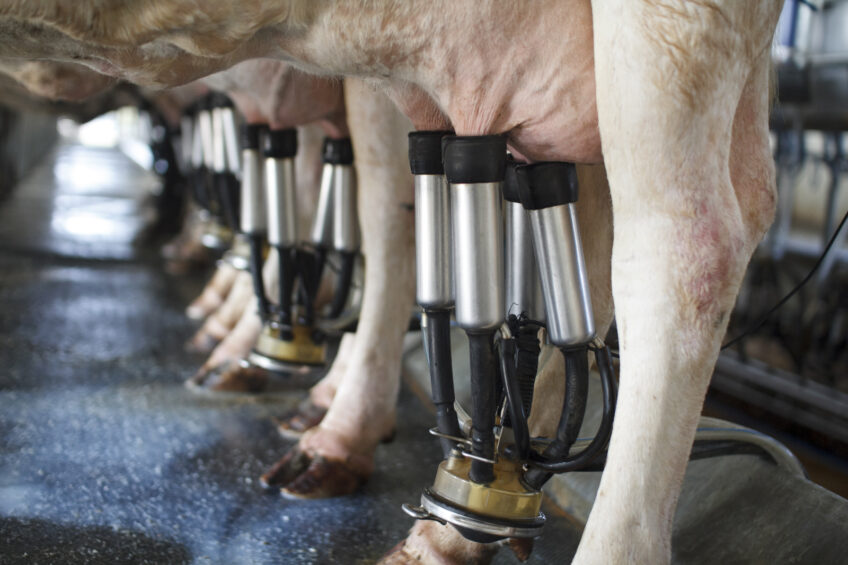Revised forecasts reveal tough global milk market

Milk production forecasts for a number of countries have been scaled back for 2015, according to biannual forecast figures released by the USDA’s Foreign Agricultural Service. This is particularly evident for New Zealand where milk production for 2015 is now forecast to decline by 1% from 2014.
Even though milk production in New Zealand through May 2015 is slightly ahead (1%) of last year, dairy producers are facing the lowest farm-gate prices in seven years. Therefore, given the expectation of low export sales for the balance of the year, they are likely to face tight margins in the upcoming months. The USDA has revised the forecast for the size of the herd up by 1% from the previous forecast but this still represents a 64,000 head decline from 2014. The milk production forecast has also by revised down by 2% to 21.7 million tonnes making it 1% lower than 2014.
Dairy farmers facing increased pressure
In Argentina, the 2015 milk production forecast has been revised down 9% due to unfavourable weather early in the year and ongoing adverse economic conditions. High inflation continues to be a problem which is compounded by limited access to credit. In addition, dairy farmers face import controls which limit key inputs such as farm equipment, export restrictions on shipments of dairy products, and a sharp drop in global prices of whole milk powder (WMP). Argentina dairy exports comprise primarily WMP and the recent drop in global WMP prices plus the dim price outlook will likely increase the pressure on dairy farmer margins. Dairy herd numbers which peaked in 2012 are expected to shrink by 6% for the third consecutive year. However, on a positive note, as the dairy sector shrinks leaving the more efficient farmers, milk yields per cow are expected to rise.
Some uncertainty
Milk output in Australia for this year through May is currently running 3% ahead in comparison to the same period last year but the forecast for an El Nino event is injecting a degree of uncertainty for future milk production. Milk cow numbers are expected to hold steady over last year so the rise in milk output is largely attributed to higher milk per cow yields.
EU dairy farmer margins squeezed
Although EU milk production in the first four months has been lagging last year’s pace by 1%, milk output is expected to increase slightly this year. Despite the end of milk production quotas, the extension of the Russian import ban, weak global demand and corresponding low dairy prices are expected to squeeze dairy farmer margins. The EU weighted milk price has dropped this year through June by 4% (to €30.47/100kg or approximately $15/cwt) to levels estimated to be below operating costs. Although EU exports of dairy products have benefited from the added competitiveness of a weakening Euro (versus the US dollar), the outlook for international dairy prices for the remainder of the year is dim. Consequently, the financial pressure on EU dairy farmers is likely to grow.
Milk powder
Shipments of whole milk powder (WMP) by major exporters are expected to decrease by 8% in 2015 while skim milk powder (SMP) exports are forecast to register a 5% increase in comparison to last year. Global demand for WMP remains weak and prices have plunged to levels not witnessed since 2009. The factors that initially precipitated the decline in prices remain present; Chinese import demand for WMP remains poor, the Russian import ban on dairy products from major producers has been extended to August 2016, and the dollar remains relatively strong. Nevertheless, markets are adjusting as the low product prices are being transmitted to farmers as lower milk prices.
Changes to cheese export markets
EU cheese production in 2015 is expected to remain virtually unchanged from 2014. The recent extension of the Russian ban on imports of dairy products from a number of major producers is undoubtedly having an impact but EU exporters have been partially offsetting the impact by successfully expanding into other markets such as the United States, Switzerland, Japan, and Algeria. US imports of cheese from the EU through May 2015 are up 24% in comparison to the same period last year. The US has also found strong cheese export markets in Mexico and South Korea meaning its export forecast has been revised up by 6% to 368,000 tons even though US exporters face stiff competition from the EU and Oceania.
Impressive increase
New Zealand meanwhile has seen an impressive 22% increase in exports of cheese through May 2015 supported by particularly strong sales to such Asian markets as Japan, Australia, and China. It appears that New Zealand cheese output is shifting towards production of fresh (mozzarella, cottage, and cream types) and prepared (grated and powdered) cheeses. The export forecast is raised 10% or an additional 30,000 tonnes to 320,000 tonnes – an increase of 15% over the previous year. The cheese production forecast was revised up 6% as the strength in demand is expected to support increased production.
Join 13,000+ subscribers
Subscribe to our newsletter to stay updated about all the need-to-know content in the dairy sector, two times a week.










